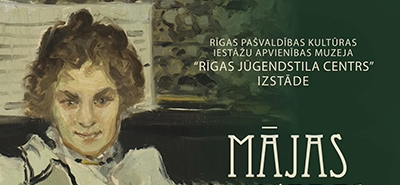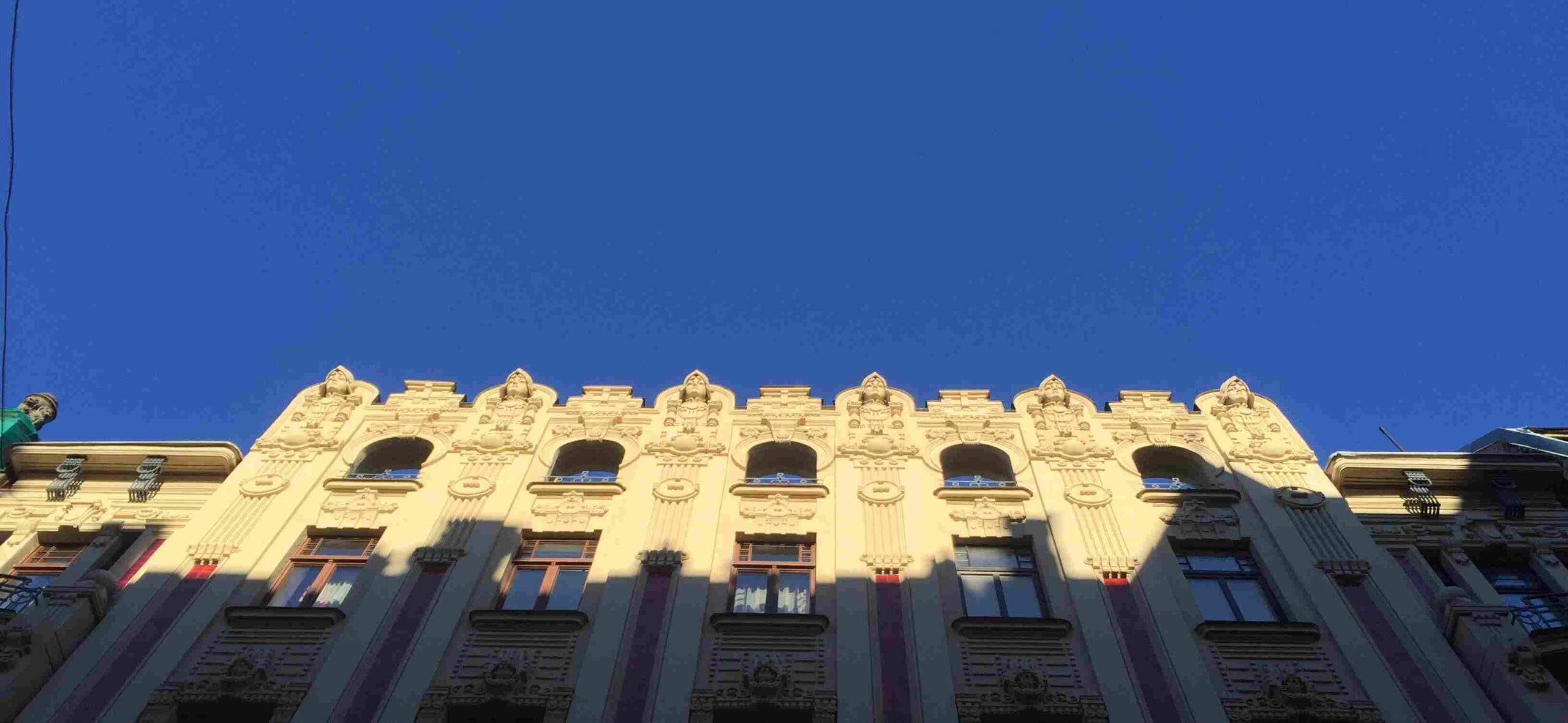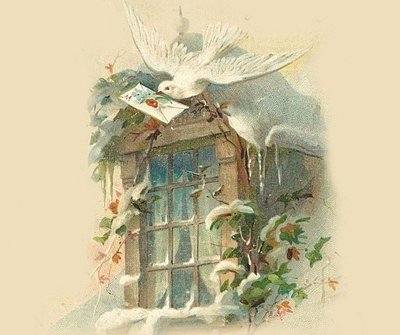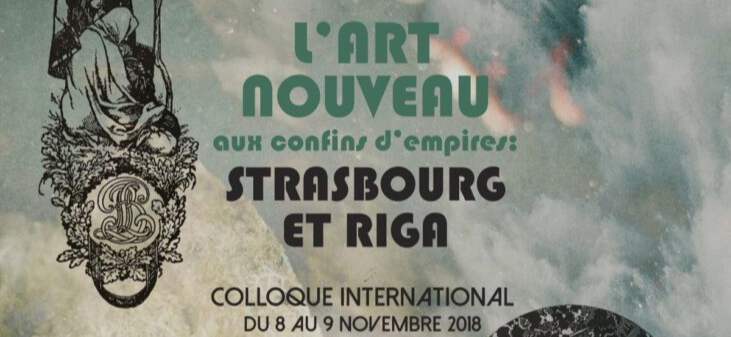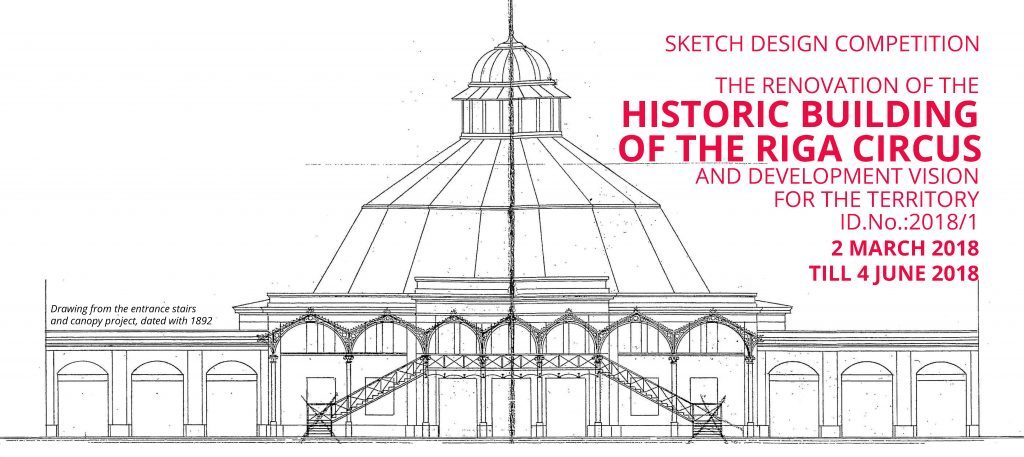Museum “Riga Art Nouveau Center” invites visitors to get acquainted with paintings by Johans Valters in a renovated interior of the early 20th century. The music theme is present in the exhibition – home concerts, playing music with friends. Music theme is present also throughout the creative life of the artist. The exhibition displays works from private collections and partner museums.
The 3rd of February 2019 was the 150th anniversary since the birth of Latvian-German painter Johanam Valteram (1869–1932). Revealing some aspects of his abundant artistic legacy, the exhibition “House Concert” at the Riga Art Nouveau Centre is a homage to the alliance of painting and music in his art and life where the violin since his early youth had similar importance as the palette and brushes.
The delicate string instrument was the painter’s companion in his study years at the St. Petersburg Imperial Academy of Arts, during the first period of his independent career in the native Jelgava (1898–1906) as well as later in Dresden (1906–1916) and Berlin (1916/1917–1932) where he made a name for himself as Walter-Kurau.
Music not only continuously influenced Walter’s painterly investigations and theoretical statements in manifold ways, but also nourished friendships and family ties, creating a sense of community, belonging and home in all his places of residence. The artist’s first wife Meta Feldmann (1876–1956) was pianist and piano teacher in Jelgava and later in Riga, whereas his second wife Gertrud Matthaes (Walter-Kurau, 1883–1932) – violinist in Dresden and Berlin.
“They are all music, and it is the secret of their peculiarity,” a reviewer of the paper Dresdner Neueste Nachrichten wrote about Walter’s paintings in his memorial exhibition in 1933, highlighting the interaction between visual experience and the world of sounds as the key to understanding his personality and work.
The current exhibition deliberately narrows this dialogue of art and music to its private and intimate manifestations, inviting to trace its beginnings in Walter’s early period at the turn of the 20th century when the impressionistic sense of presence and the abstracting stylisation of Art Nouveau in an inspiring combination transformed the observed impressions and moods into visual ‘melodies’
The Dresden period in the imagery and style of Walter’s art glows as a time of fêtes galantes in colour and sound with the splendour of the so-called Belle époque translated into highly abstracted painterly impressions of theatre interiors, musical performances and festive gatherings.
During the following Berlin period Walter proceeded towards an increasingly abstract perception of nature and established that “a truly painterly delight in nature is awakened only when, beyond concrete objects, the eye begins to perceive melodious colour relationships and delicate regularities in the architecture of form”.
The “House Concert” is not only a subject represented in the exhibition and a recurrent motif of biographical evidence – it is also how the ‘life’ of artworks in a private environment at the time of their production and nowadays my be perceived and described. Besides two portraits from the Latvian National Museum of Art, all the rest of the twenty paintings are displayed by the courtesy of the Zuzāns Collection / Mūkusala Art Salon and other Latvian private collectors.
Ranging from the late 19th century to the 1920s, exhibits also include some recently discovered masterpieces of the artist.
To know information about opening times and prices CLICK HERE.

Johans Valters (also known as Johann Walter-Kurau) was a prominent figure in the Art Nouveau movement in Riga, Latvia. His contributions to the city’s cultural and artistic heritage are significant, especially in the context of the flourishing Art Nouveau scene at the turn of the 20th century.
Johans Valters: Life and Influence
Born in 1869 in Latvia, Johans Valters was an accomplished painter and graphic artist. He studied at the Imperial Academy of Arts in St. Petersburg, Russia, which was a leading institution for arts education in the Russian Empire. Valters’ early works were influenced by Realism and Impressionism, but he eventually became a central figure in the Art Nouveau movement in Riga.
Valters was known for his portraits, landscapes, and genre scenes, often imbued with the flowing lines, organic forms, and symbolic elements characteristic of Art Nouveau. His work frequently reflected the themes of nature and mythology, aligning with the movement’s emphasis on beauty and harmony.
Art Nouveau in Riga
Riga is celebrated for its rich collection of Art Nouveau architecture, which is among the most extensive and best-preserved in Europe. The city’s embrace of this style coincided with a period of rapid economic growth and urban development in the late 19th and early 20th centuries.
Art Nouveau in Riga is distinguished by its eclectic mix of architectural elements, blending traditional Latvian motifs with modern, international trends. This period saw the construction of numerous residential, commercial, and public buildings that showcased the style\’s distinctive characteristics, such as intricate facades, decorative ornaments, and asymmetrical designs.
Key Sites in Riga
One of the most notable areas for Art Nouveau architecture in Riga is the Alberta iela (Albert Street) district. This area features a concentration of buildings designed by prominent architects, including Mikhail Eisenstein. Eisenstein’s works are renowned for their elaborate facades, adorned with sculptures, floral patterns, and fantastical creatures.
Another important site is the Riga Art Nouveau Museum, located in a beautifully restored Art Nouveau apartment. The museum offers a glimpse into the lifestyle and aesthetics of the period, with authentic interiors and artifacts.
Valters’ Contribution to Riga’s Art Nouveau Scene
While Johans Valters was primarily known for his painting, his influence extended to the broader cultural milieu of Riga’s Art Nouveau movement. He was an active participant in the city’s artistic community, contributing to exhibitions and collaborating with other artists and architects. His works were exhibited in various European cities, helping to elevate the international profile of Latvian art.
Valters’ paintings, with their elegant lines and emotive subjects, complemented the architectural innovations of his contemporaries, creating a cohesive and vibrant Art Nouveau environment in Riga. His legacy is preserved not only in his own artworks but also in the enduring beauty of the city’s Art Nouveau heritage.
Conclusion: Johans Valters played a crucial role in the Art Nouveau movement in Riga, contributing to the city’s reputation as a hub of artistic and architectural innovation. His work, along with that of his peers, helped to shape a distinctive cultural identity that continues to attract admiration and study. Exploring Riga’s Art Nouveau treasures, guided by the insights of experts on artnouveau.club, offers a deeper appreciation of the city’s rich artistic legacy and the lasting impact of figures like Valters.

